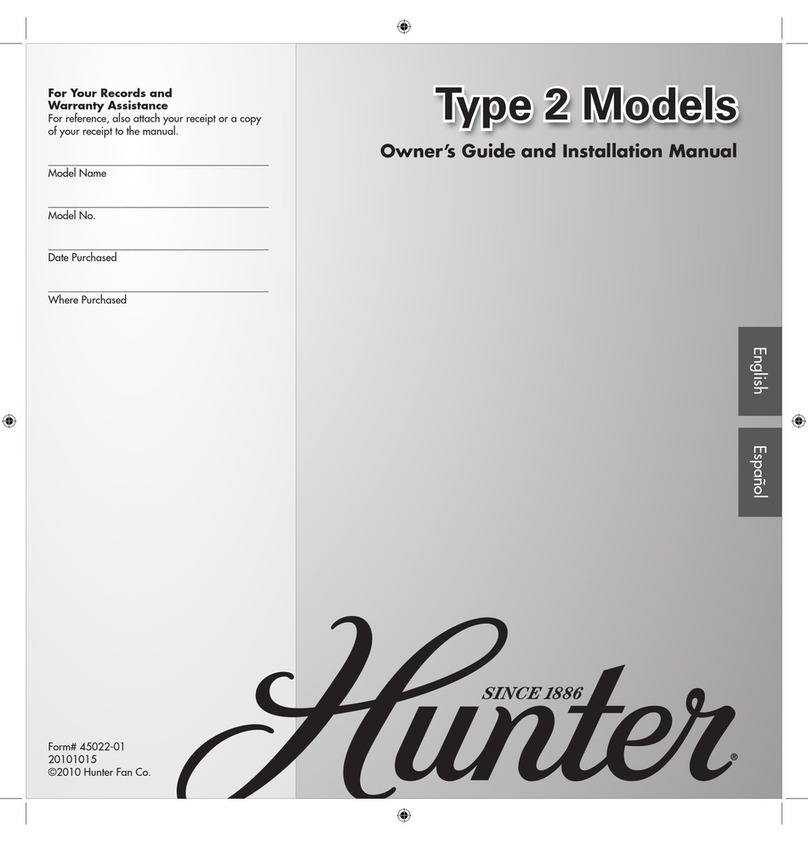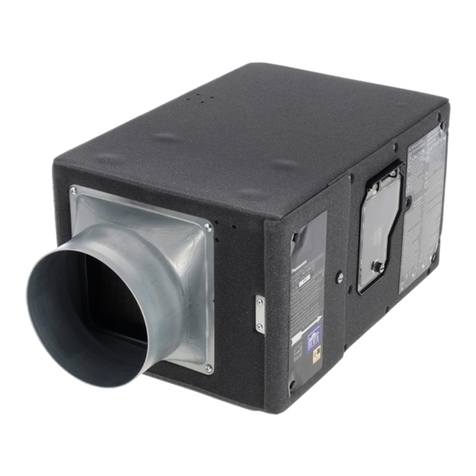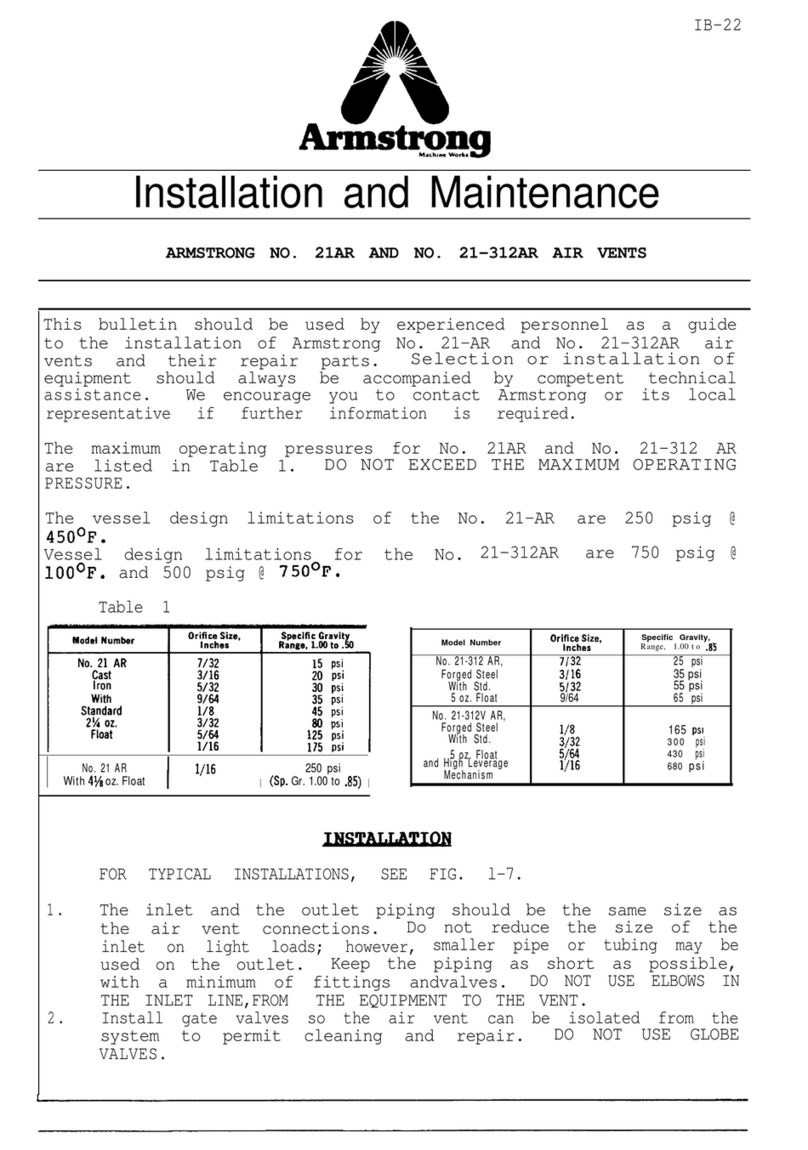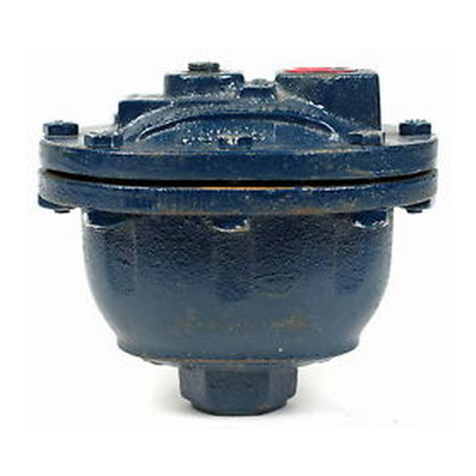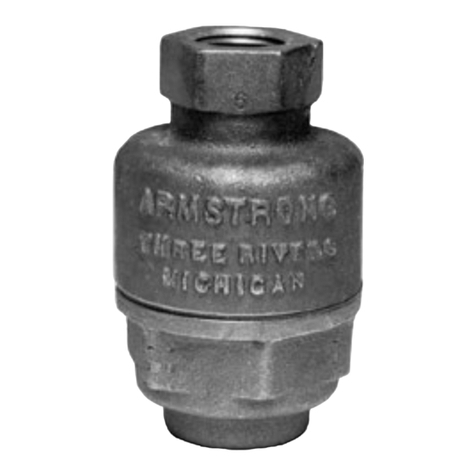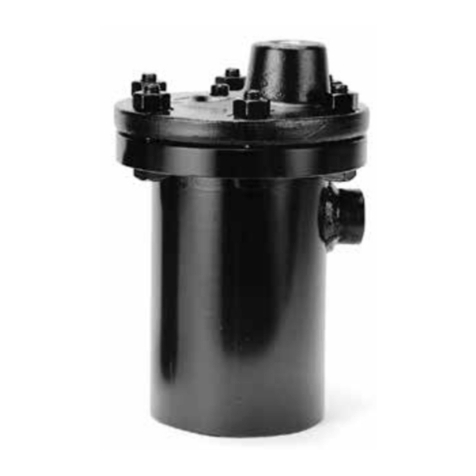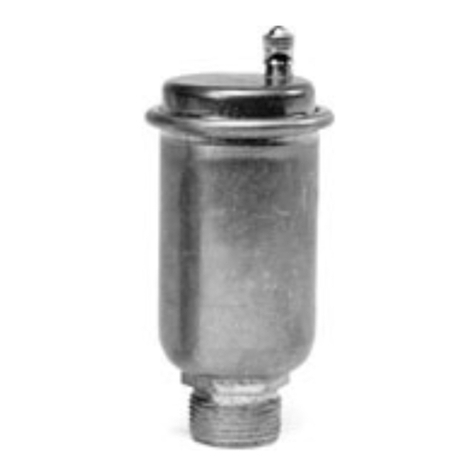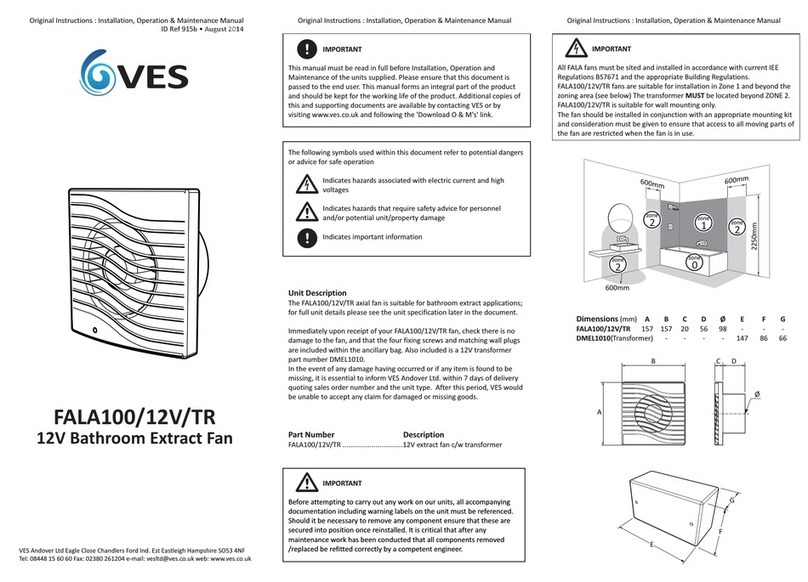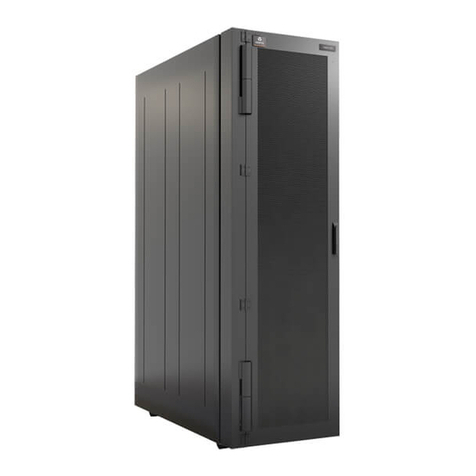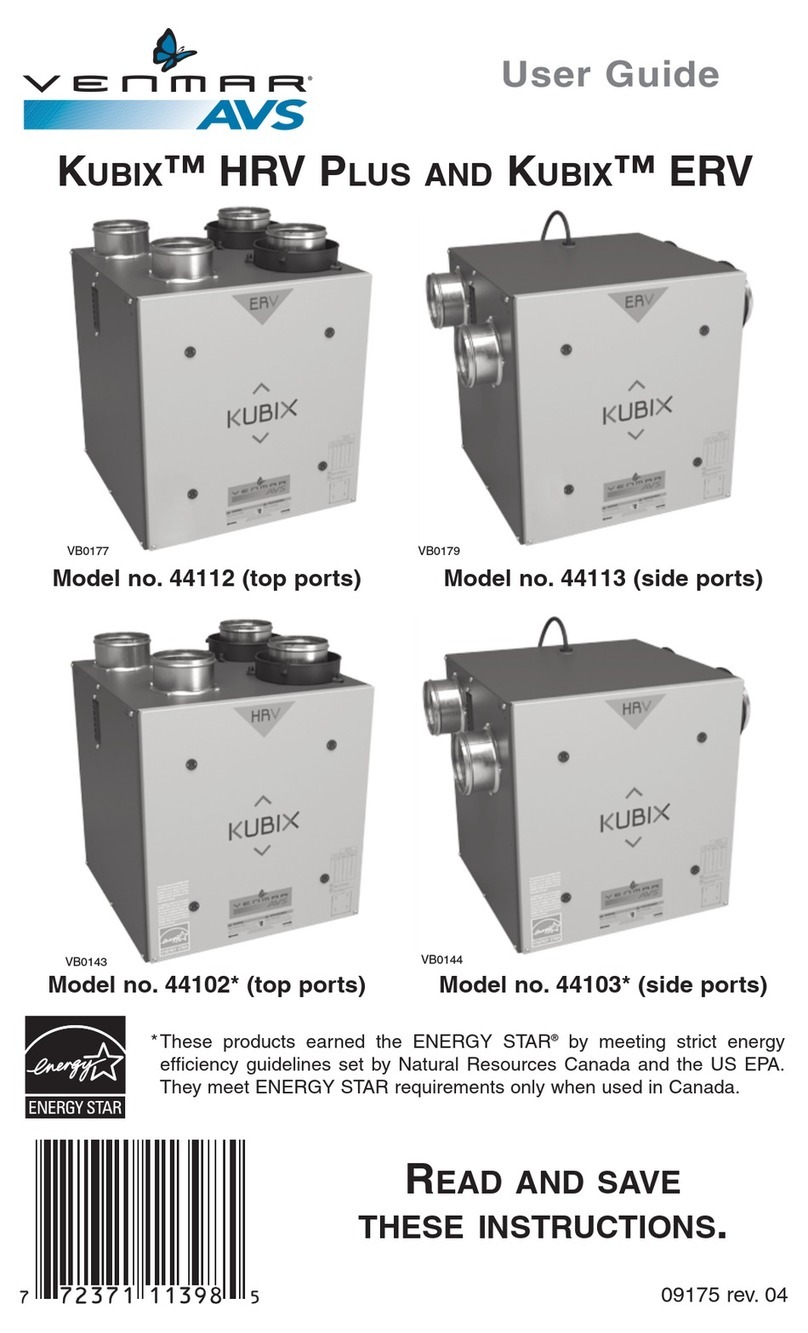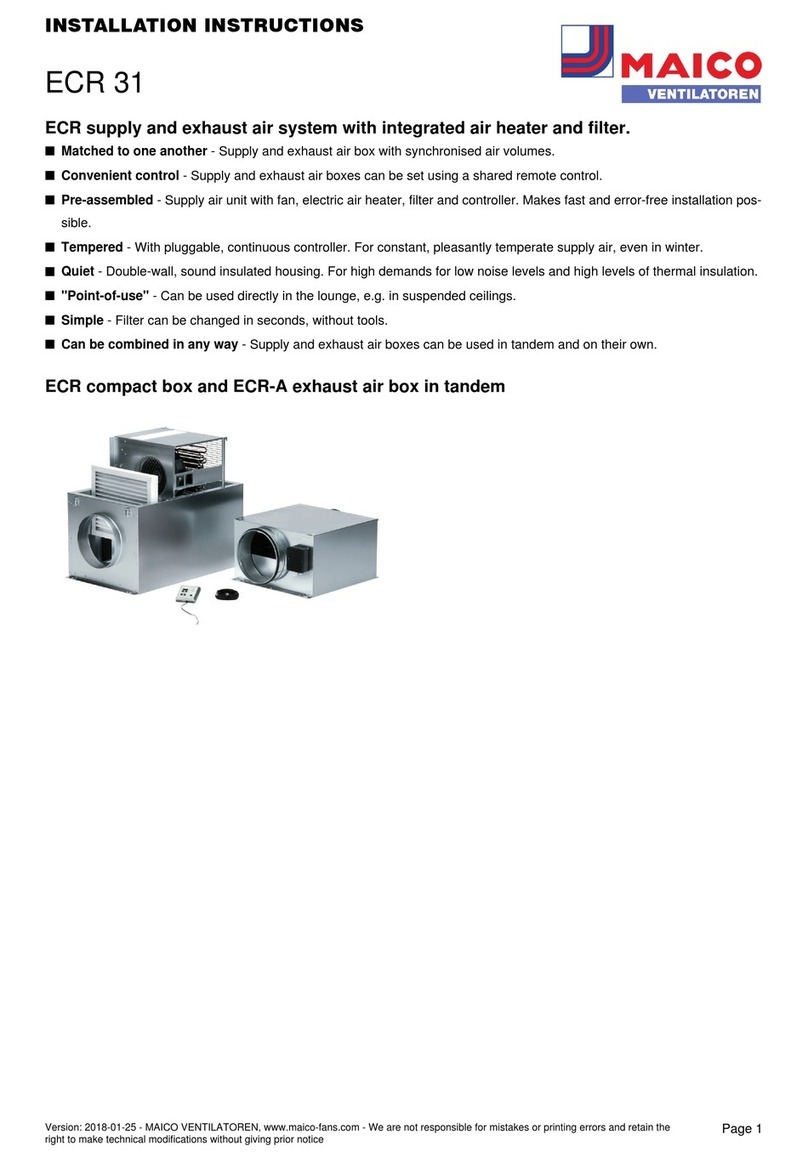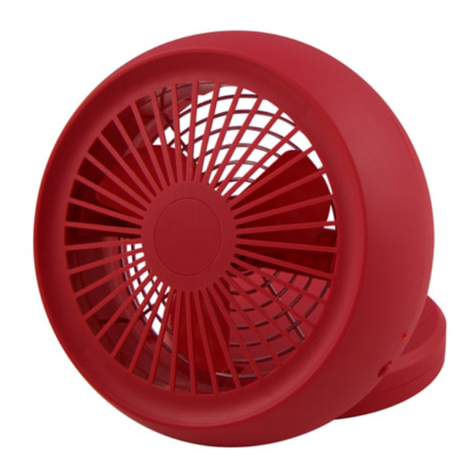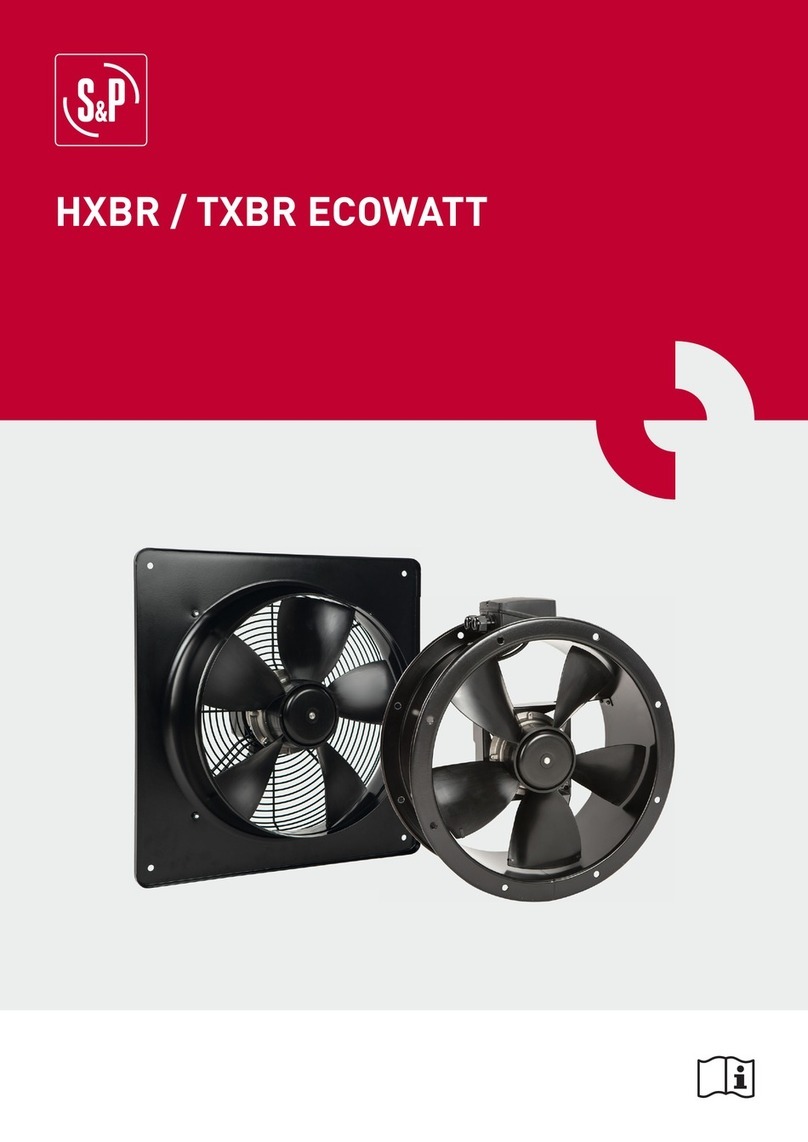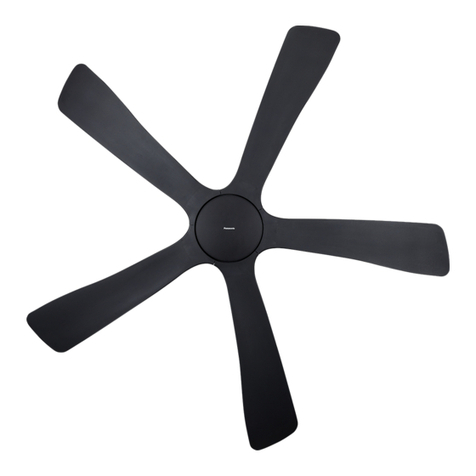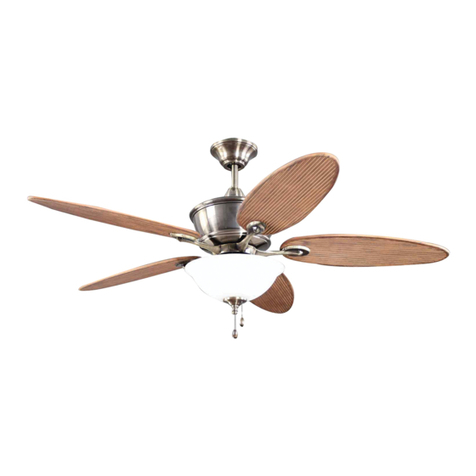
Fixed speed settings
1-4 speeds1. For
small systems and 4.
for large systems or
venting
Fixed speed for
systems with constant
resistance and radi-
ant floor heating
systems.
GENERAL
In all AGE circulators, Pressure Loss Compensation (P.L.C.) is included in
the control, which means that the circulator does not follow a constant differ-
ential pressure but takes into account the decreasing pressure needs at
decreasing flow. This setting isin the auto controlling mode. See fig. 4.
Signal LED
No light Main supply switched off
Green light Normal operation – power on
Red light Error detected by the electronics
Description
ERROR SIGNALS
The red light on the back of the terminal box will, in case of an error, indicate
the type of error detected by the electronic. Approximately every minute the
light will blink a number of times, except 31-07, which is permanently illumi-
nated in the event of a fault.
Number of blinks
1 Under voltage from the power supply
2 Over voltage from the power supply
3 Instantaneous over current
Error
4 Internal power failure
5 Continues power overload
6 Overheating of the electronic
7 Memory failure
8 Motor overheated
9 Program failure
ERROR RELAY
With the exception of the 32-07, the AGE
has a fault relay. The relay has both a NC
and a NO connecting. See fig. 3.
Fault Cause Action
The circulator is not
running. See under heading
”Signals” Reset fault indication.
Check main supply and fuses.
Circulator will not start /
is running irregularly. Impurities in the
circulator. See under heading
“Service/ Maintenance”.
The circulatoris running
but no flow. Air in the system.
Closed valve Vent circulator and
system.Open valve.
Circulator noisy. Circulator speed too
high. Static head too
low. Air in system
Decrease set point of
control. Increase inlet
pressure. Vent circulator
and system.
SERVICE / MAINTENANCE
Armstrong’s AGE Series range of glandless circulators is virtually
maintenance free and in a well designed system should give many years of
trouble free operation.
If motor shaft is seized as a result of a long period without use or due to
accumulation of impurities, it should be freed. Insert a screwdriver through
the venting plughole and into the slot in the end of the shaft and rotate.
Please note: Any repairs required to the internal electrical parts of the circu-
lator, are to be carried out by an Armstrong approved service organisation.
Transport, Handling and Storage Instructions
a. Transport.
i . AGE circulators are despatched fully assembled. AGE
circulators are packed for transport by mornal road, sea and air
carriers.
b. Handling
i. Crushing Hazard.
Ii. When lifting an AGE circulator above a weight of 25 kg,
use lifting equipment haveing a safe working load rating
suitable for the load specified. Use suitable slings for lifting any
circulator..
c. Storage
i. Short term Storage (six weeks). If the AGE circulator is not to be
installed immediately after unpacking, then it is to be be stored in
a cool dry dust free location.
Ii. Long term storage. If the AGE circulator is not to be installed for
period of longer than six weeks after receipt on site, then it is to
be retained in its packing case. If the casing case is disposed of,
then the inlet and outlet connections are to be blanked off with
suitable clean covers to prevent ingress of damaging solids.
DECLARATION OF CONFORMITY
Armstrong hereby declares that this unit complies with the following
relevant provisions
i. EC Machinery Directives 89/392/EEC, 91/368/EEC, 93/44/EEC,
93/68/EEC
Ii. Electromagnatic compatability standard 89/336/EEC, 02/31/EEC,
93/68/EEC
iii. Applied harmonisation of standards EN809, EN50 081-1,
EN50 082-1, EN50-081-2, EN50-082-2.
Fig.3
SIGNALS
AGE circulators have two LED’s on the terminal box for status indication.
Power to the circulator is indicated with the green LED. The red LED will
be on if the circulator detect a fault. Reset is carried out by switching the
mains supply off for 5 sec. and then on again. See fig.5.
1
1
2
2
3
3
4
4
Auto max.
Auto min.
Fig.4 Fig.5
FAULT FINDING
Red = Alam
Green = Power on
For Armstrong locations worldwide, please visit www.armstrongintegrated.com
S. A. Armstrong Limited
23 Bertrand Avenue
Toronto, Ontario
Canada, M1L 2P3
T: (416) 755-2291
F(Main): (416) 759-9101
Armstrong Holden Brooke Pullen
Wenlock Way
Manchester
United Kingdom, M12 5JL
T: +44 (0) 1612 232223
F: +44 (0) 1612 209660
Armstrong Design Private Ltd.
(Unit 1- Armstrong Manufacturing Center)
490-L, 4th Phase, Peenya Industrial Area,
Bangalore, India 650 058
T: +91 (80) 4149 2832
F: +91 (80) 4117 9783 © S.A. Armstrong Limited 2010

